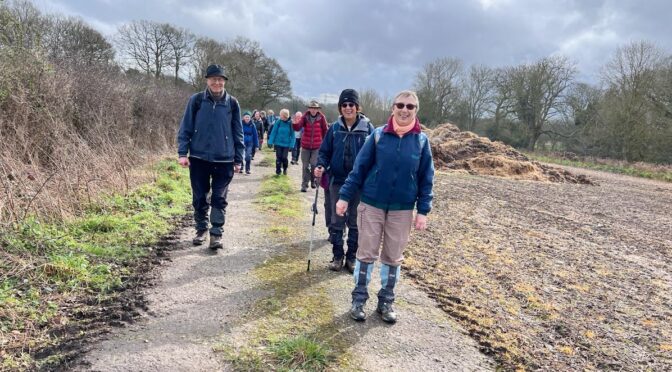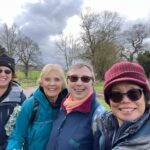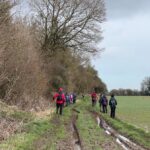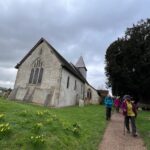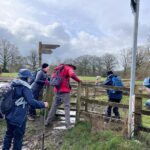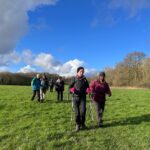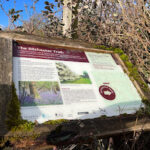I warned them it would be muddy but 22 Poly Ramblers joined me on this circular walk to the Roman town of Calleva Atrebatum, which has one of the best-preserved Roman town defences in England. Calleva Atrebatum was a flourishing Iron Age fortified town, the capital of the Atrebates tribe. It then became a walled town in the Roman province of Britannia, at a major crossroads of the roads of southern Britain. Unlike most major Roman settlements in southern England, Calleva Atrebatum was never re-occupied as a substantial settlement or built over, but instead became a small medieval village until it was deserted around the 5th century, possibly because of the black death plague that devastated medieval England. The museum of Reading in Reading Town Hall has a gallery devoted to Calleva, displaying many archaeological finds from the excavations.
We had rambled around Silchester and Calleva a couple of times many years ago with Rosemary, one of our Honorary members. The club had not gone back there since then so I thought it would be interesting to lead a walk to see the amphitheatre and the walls of the Roman town. We met at Reading station, some having travelled for free on the Elizabeth Line and others coming by train from Paddington. 3 more Poly Ramblers were waiting at Bramley station.
The first part of the walk was along country lanes and a farm track (so no mud) until we reached a farm where piglets and goats proved popular. Then the mud started as we walked along arable fields and, after going under a railway bridge, we continued along some wood, then more fields until we arrived at the 12th century parish church of St Mary the Virgin, Silchester. We stopped for a quick visit inside the church in order not to leave our muddy footprints. The information about the trail says that the church was a sacred site for the Roman townspeople as two temples lie beneath the church and the churchyard. We then proceeded along a road to see the remains of the Roman amphitheatre. There, we were distracted by a small group – maybe scouts – who were cooking their lunch, and the lovely smell made us hungry. It started to rain quite heavily as we reached the ancient Roman walls, and we could not enjoy the workmanship and beauty as we were too busy slipping and sliding in the mud. We then had to make a detour because of a flooded path which involved walking along a busy road. We finally reached Silchester and the Calleva Arms public house where 11 of us had lunch. It had stopped raining and the sun was out when we resumed our walk, once again having to walk along the busy road. We continued along fields and on the edge of woodlands to Church Lane until we reached the hamlet of Three Ashes. We turned left instead of right which gave us the opportunity to see a pond with a huge number of frogspawn. Spring is definitely coming! After turning back in the right direction, we crossed the Silchester Brook and walked across very muddy open fields to Bramley Frith – a relic of ancient woodland – and to Bramley station where we only had to wait a couple of minutes for the train. The walk was 9 miles instead of 8 miles because of the detour.
Dominique. Photos by Ida

